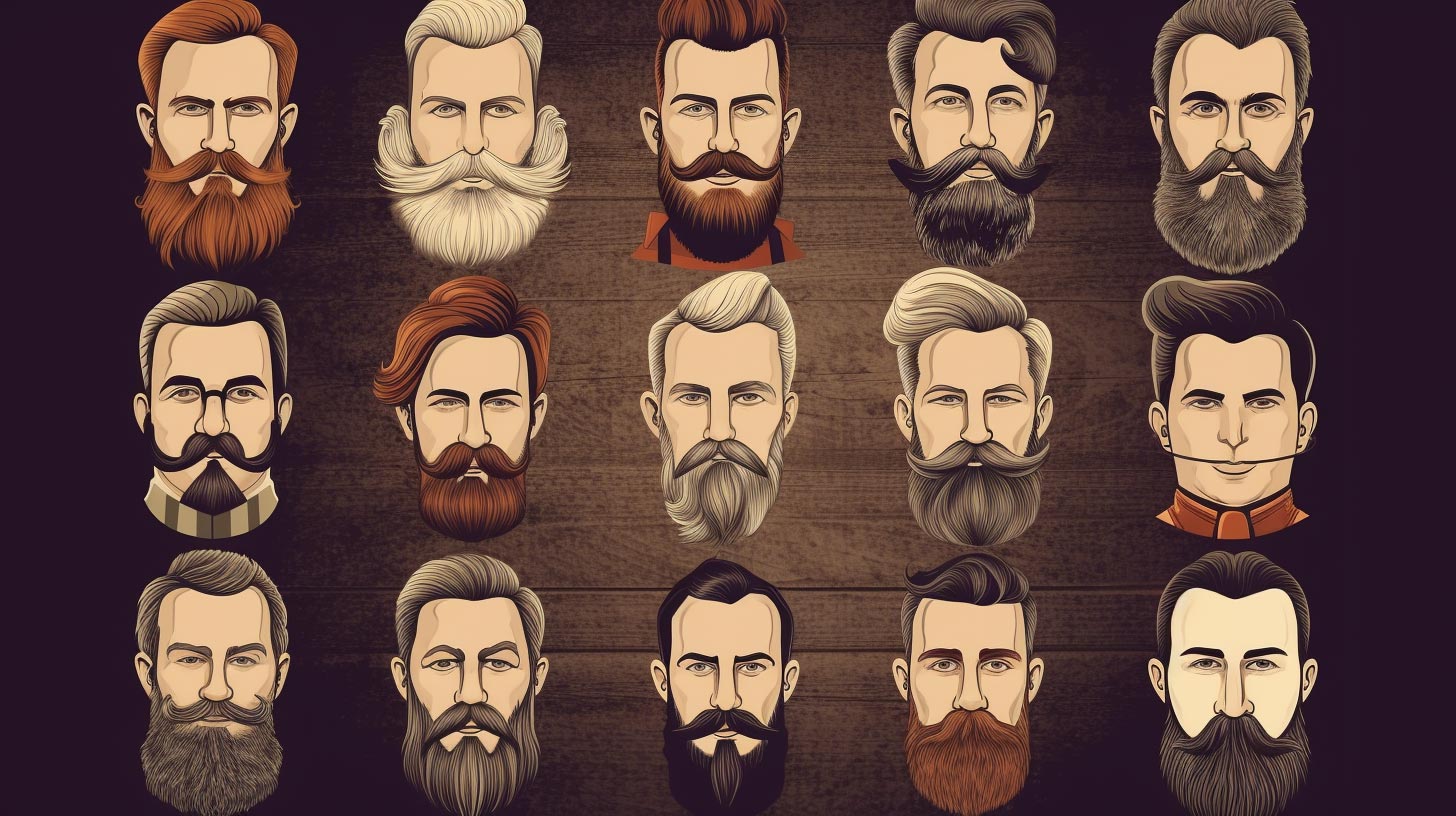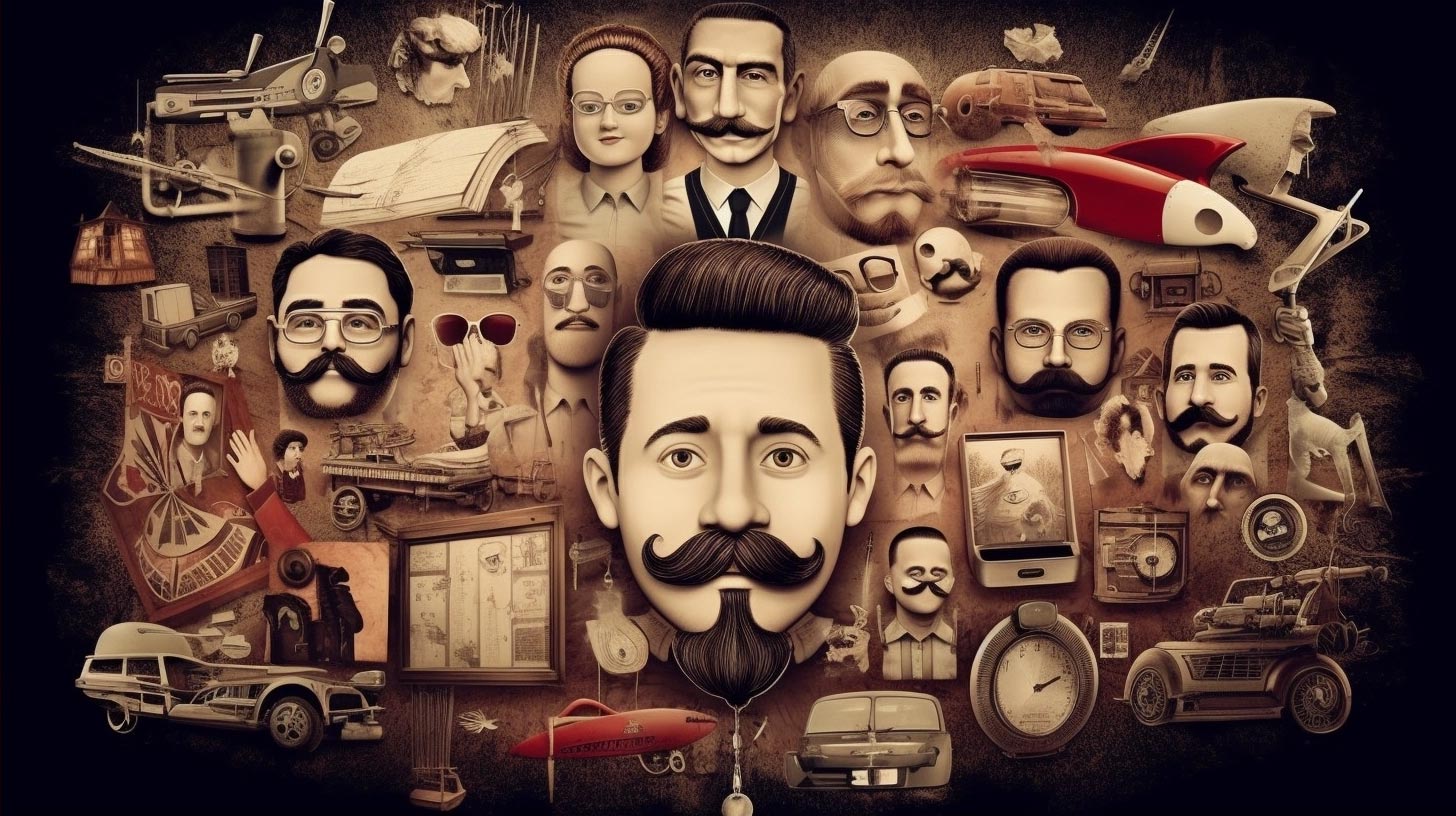Have you ever contemplated the hirsute appendages adorning the faces of our ancient ancestors? Indeed, beards have been an essential part of human history, often symbolizing power, wisdom, and virility. As you delve into the world of facial hair in ancient cultures, you’ll see that it wasn’t just about style or practicality; these magnificent tufts held deep cultural significance and often reflected societal norms and values.
Travel with us on a whiskered journey through time as we explore how some of the most well-known ancient civilizations viewed and utilized beards. From the clean-shaven Egyptians to the impressively hairy Mesopotamians, get ready to marvel at how much one’s facial fuzz mattered in these fascinating societies. Whether they were meticulously groomed or left to grow wild and free, beards played an important role in shaping our history – sometimes quite literally! So grab your beard trimmer (or perhaps just a comb) and join us as we uncover what lies beneath those historical chin curtains.
Contents
- 1 Key Takeaways
- 2 Beards in Egyptian Society
- 3 Facial Hair in Ancient Greece
- 4 Mesopotamian Beard Traditions
- 5 Beards in the Roman Empire
- 6 The Significance of Beards in Ancient China
- 7 Frequently Asked Questions
- 7.1 How did climate and environmental factors influence facial hair trends in ancient cultures?
- 7.2 Were there any specific religious or spiritual beliefs associated with beards and facial hair in ancient civilizations beyond the ones mentioned in the article?
- 7.3 Did ancient cultures have any grooming techniques or tools specifically for maintaining beards and facial hair?
- 7.4 Were there any gender or social class differences in the way facial hair was perceived or treated in these ancient societies?
- 7.5 How has the legacy of ancient cultural views on beards and facial hair influenced modern beard trends and styles?
- 8 Conclusion
Key Takeaways
- Beards held great symbolic value in ancient societies, representing power, wisdom, and virility.
- Different cultures had varying attitudes towards facial hair, with some valuing beards more than others.
- Beards were often associated with specific social standings or roles, such as rulers, warriors, or philosophers.
- Facial hair could be adorned with decorations or scented oils, and in some cases, had spiritual or religious significance.
Beards in Egyptian Society
In ancient Egyptian society, you’ll find that beards held a surprising amount of power and significance, shaping the way people viewed each other. Contrary to popular belief, most Egyptians were actually clean-shaven; however, their rulers and gods were often depicted with prominent beards. These divine beards symbolized authority and virility, and pharaohs would wear artificial beards made of metal or precious materials during ceremonies to showcase their connection to the gods. As for the commoners, they sported facial hair only on special occasions or as an indication of mourning.
The practice of wearing beards in ancient Egypt was not limited to men—queens like Hatshepsut also donned false royal beards as a display of power when ruling in place of male counterparts. This intriguing aspect highlights how versatile facial hair was in representing authority across gender lines within this civilization. It’s worth noting that while Egyptians valued beard culture immensely, they also placed great importance on personal hygiene; thus maintaining a delicate balance between grooming habits and reverence for symbolic facial hair. On that note, let’s dive into another fascinating culture where whiskers reigned supreme: ancient Greece!
Facial Hair in Ancient Greece
You might think Greek philosophers, with their robust facial fuzz, were just early hipsters, but actually, beards held deep significance in their society. In ancient Greece, a beard was a symbol of wisdom and maturity. It separated the men from the boys – quite literally – since only adult men were allowed to grow facial hair. Beards were also seen as an indication of virility and strength. They adorned the faces of some of the most powerful gods like Zeus and Poseidon and served as badges of honor for warriors returning home from battle.
Social norms varied across different regions in Greece; however, beards remained fashionable for most periods until Alexander the Great came along and changed everything by adopting a clean-shaven look. He believed that being clean-shaven would give his soldiers an advantage in hand-to-hand combat because it left no convenient handle for enemies to grab onto during close encounters. This shift in attitude towards facial hair affected not only military personnel but also civilians who began emulating this new look to show loyalty to Alexander’s regime or simply follow the latest trend. Despite how things panned out during Alexander’s reign, nothing could have prepared those ancient Greeks for what awaited them when they stumbled upon Mesopotamian beard traditions!
Mesopotamian Beard Traditions
Believe it or not, Mesopotamian beard traditions were even more elaborate than those of the Greeks, and they held a special place in their society. The ancient people of Mesopotamia, which includes the Sumerians, Akkadians, Babylonians, and Assyrians, saw beards as symbols of wisdom, masculinity, and status. As you delve into the fascinating world of Mesopotamian facial hair customs, consider these key aspects:
- Beards were often elaborately styled with curls and ringlets using heated tongs.
- Men would use scented oils to groom their beards and keep them lustrous.
- High-ranking officials and kings would decorate their facial hair with gold dust or precious stones.
- Some religious rituals involved trimming or shaving one’s beard as an act of purification.
As you chuckle at the thought of ancient men painstakingly curling their beards with hot irons or adorning them with gems like modern-day hipsters wearing ironic mustache jewelry, remember that these practices reflected significant cultural values. These ornate grooming habits signified social standing and even had spiritual dimensions in some cases. So next time you encounter someone sporting an impressive beard (or if you’re cultivating one yourself), give a nod to its venerable roots in ancient history. Now let’s whisk ourselves away to another intriguing chapter of hirsute history: the Roman Empire and its own unique perspective on beardedness.
Beards in the Roman Empire
Now, don’t be too quick to assume that the Roman Empire was just a clean-shaven copy of earlier civilizations; their approach to facial hair had its own unique twists and turns that might surprise you. In the early days of the Republic, beards were actually quite common among Romans. However, as time went on and Rome grew into a sprawling empire, shaving became more popular – especially among the upper classes. This shift in grooming habits can be attributed in part to Alexander the Great’s influence on Roman culture. Alex was known for his clean-shaven look (and conquering most of the known world), which made it fashionable for Roman men to follow suit.
As with many things in ancient Rome, one’s facial hair choices could carry significant social implications. You see, sporting a beard could indicate wisdom and experience – philosophers like Seneca and Marcus Aurelius were often depicted with impressive whiskers – but it could also signify mourning or even an act of defiance against societal norms. On the other hand, being clean-shaven was seen as a symbol of youthfulness and vigor (think Julius Caesar) or even conformity to imperial rule during certain periods. So whether you were rocking a full face of fuzz or going smooth as marble, your choice said something about who you were in ancient Roman society. Next up: let’s dig into how those stylish ancient Chinese folks felt about their facial hair game!
The Significance of Beards in Ancient China
In the vast, rich tapestry of China’s history, facial hair held a revered and complex status that’ll truly captivate your imagination. Beards were viewed as symbols of wisdom and virtue, with various styles representing different ideals and social standings. As you delve deeper into the world of ancient Chinese beards, you’ll find that these whiskers were not just mere fashion statements but carried significant cultural weight.
To pique your interest further, here are a few fascinating aspects about beards in ancient China:
- Confucius’ Influence: The great philosopher Confucius sported a beard which was considered to embody wisdom and moral integrity. His followers often grew their own beards to emulate his appearance.
- Beard Rankings: Different beard styles were associated with varying levels of social standing. For example, long flowing beards represented nobility while shorter ones indicated lower status.
- Mourning Rituals: It was customary for men to let their facial hair grow unkempt during times of mourning as a display of deep sorrow and respect for the deceased.
- The Artistic Touch: Ancient Chinese art is replete with depictions of sages and scholars sporting impressive beards – an artistic nod to their esteemed status within society.
- The Five Dynasties Era Shave-down: During this turbulent period (907–960 CE), many men shaved off their facial hair in an attempt to distance themselves from the previous dynasty’s political chaos.
As you can see, when it comes to ancient China, there’s more than meets the eye regarding facial fuzz. So next time you’re admiring some traditional Chinese artwork or brushing up on your history knowledge, take a moment to appreciate the significance behind those glorious whiskers!
Frequently Asked Questions
How did climate and environmental factors influence facial hair trends in ancient cultures?
Climate and environmental factors shaped facial hair trends by affecting comfort and practicality. Hotter climates made you ditch the beard for a cooler face, while colder ones kept your chin warm with fuzz.
Were there any specific religious or spiritual beliefs associated with beards and facial hair in ancient civilizations beyond the ones mentioned in the article?
Curious about bearded beliefs? Ancient Egyptians sported goatees for spiritual reasons, while Sikhs considered unshorn hair sacred. You’ll find that ancient Greeks revered beards, making them symbols of wisdom and virility.
Did ancient cultures have any grooming techniques or tools specifically for maintaining beards and facial hair?
Oh, you bet they did! Ancient folks weren’t cavemen; they had some nifty grooming tools like razors and tweezers to keep those beards in check. So yes, even back then, a well-kept beard was a thing.
You won’t believe the hairy situations ancient societies faced! Gender and social class played a huge role in how facial hair was perceived and treated. High-status men often rocked beards, while women stayed smooth.
How has the legacy of ancient cultural views on beards and facial hair influenced modern beard trends and styles?
You’d be surprised how ancient cultural views on beards have shaped today’s styles! Royalty, warriors, and philosophers all rocked facial hair back then, inspiring modern hipsters and lumbersexuals alike. History repeats itself, folks!
Conclusion
So, my friend, it seems that you’ve just taken a stroll through the hallowed halls of ancient beard history. How enlightening! It’s clear that our furry-faced forefathers truly understood the importance of a good chinstrap.
But, alas, as we stroke our modern stubble in contemplation, let us remember that these ancient cultures were merely dabbling in facial hair fashion. After all, who wouldn’t want to sport an imposing Mesopotamian beard or twirl their whiskers like an Egyptian god?




